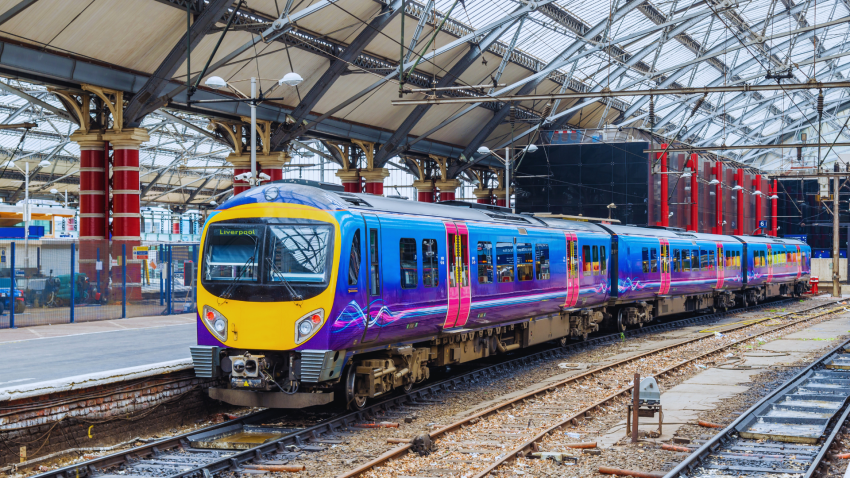Using local transport offers a range of advantages that can enhance everyday life. Choosing local transport contributes to reduced traffic congestion, lower emissions, and significant cost savings for individuals and communities alike. By opting for buses, trams, or bicycles, people can not only navigate their cities more efficiently but also play a part in promoting sustainable urban development.
Moreover, local transport fosters a sense of community. Public transit systems often encourage social interactions, making it easier for residents to connect. This engagement can lead to a greater sense of belonging and improved overall well-being, which is beneficial for individuals and the broader community.
By embracing local transport, individuals take a step toward a more sustainable future while enjoying a variety of social, financial, and environmental benefits. Exploring these advantages can inspire others to consider how their transportation choices impact their lives and surroundings.
Environmental Advantages
Utilizing local transport presents several environmental benefits that contribute to sustainability. Key areas of impact include the reduction of carbon emissions, alleviation of traffic congestion, and improvement of air quality.
Reduces Carbon Footprint
Local transport options, such as buses, trams, and cycling, significantly reduce the carbon emissions associated with individual car use. Public transportation systems typically have a lower carbon footprint per passenger compared to private vehicles.
For example, a bus can replace multiple cars on the road, resulting in less fuel consumption. Additionally, cycling and walking produce zero emissions, further enhancing the environmental benefits of local commuting options.
Encouraging the use of these transport methods not only minimizes greenhouse gas emissions but also supports local economies by promoting sustainable practices.
Lessons Traffic Congestion
Local transport helps decrease traffic congestion in urban areas. With fewer cars on the road, public transportation reduces the number of vehicles competing for space.
This reduction leads to shorter travel times and fewer delays for all road users. According to traffic studies, a 10% increase in public transport use can lead to a significant decrease in peak-hour congestion.
Reduced traffic also decreases wear and tear on roads, lowering maintenance costs over time. As congestion lessens, it creates a more efficient and pleasant urban environment.
Promotes Cleaner Air Quality
The transition to local transport significantly improves air quality in cities. Fewer vehicles on the road mean decreased emissions of harmful pollutants like nitrogen oxides and particulate matter.
Public transportation systems are often more stringent in emissions standards than individual vehicles. For instance, modern buses utilize cleaner fuels and technologies that reduce their environmental impact.
Health benefits arise from cleaner air, contributing to a decrease in respiratory illnesses and other health concerns linked to air pollution. Improved air quality enhances the quality of life for residents, promoting an overall healthier community.
Economic Benefits
Local transport offers various economic advantages that significantly impact both individuals and the community. By examining cost savings for individuals, support for the local economy, and a reduction in public infrastructure expenses, it becomes clear how local transport is essential for economic stability and growth.
Cost Savings for Individuals
Using local transport can lead to substantial cost savings for individuals. Commuters save money on fuel, vehicle maintenance, and insurance when opting for public transit over personal vehicles.
- Monthly Public Transport Pass: Typically costs between $70 and $150.
- Average Monthly Fuel Costs: Often exceeds $200.
Additionally, many local transit systems offer discounts for students, seniors, and low-income residents, making it an even more affordable option. Further savings are realized by avoiding tolls and parking fees, which can add significantly to monthly expenses.
Supports Local Economy
Local transport plays a crucial role in supporting the local economy. By connecting residents to businesses, public transport encourages spending within the community.
- Increased Accessibility: Helps small businesses thrive by boosting foot traffic.
- Job Creation: Local transport systems often create jobs in various sectors, including management, maintenance, and customer service.
Furthermore, local transport ensures that residents have access to employment opportunities, which can lead to lower unemployment rates and increased economic activity. A well-functioning transit system enhances overall community vitality.
Reduces Public Infrastructure Expenses
Investing in local transport helps reduce public infrastructure expenses in multiple ways. By encouraging the use of buses and trains, cities can decrease road maintenance costs. Fewer vehicles on the road lead to reduced wear and tear on public roads.
- Lower Repair Costs: More public transport usage means fewer potholes and repairs.
- Enhanced Urban Planning: Investing in public transport can lead to more efficient land use.
This shift not only saves money but also allows local authorities to allocate funds to other critical infrastructure projects, boosting overall community development.
Social and Health Implications
Utilizing local transport significantly impacts social dynamics and public health. It fosters physical health, enhances community relationships, and contributes to a more vibrant social environment.
Encourages Physical Activity
Using local transport often requires individuals to walk or cycle to stations or stops. This increase in physical activity promotes cardiovascular health and can reduce obesity rates. Engaging in these activities regularly helps strengthen muscles and improve endurance.
Additionally, walking or cycling instead of driving can lead to healthier neighborhoods. Studies suggest that communities with accessible public transit experience higher physical activity levels among residents. When individuals incorporate active commuting into their daily routines, they enjoy a multifaceted approach to health.
Improves Public Health
Local transport systems can help reduce air pollution and greenhouse gas emissions. When more people opt for public transport, the number of cars on the road decreases, leading to improved air quality. Better air quality directly correlates with lower respiratory issues and other health problems.
Moreover, accessible transport decreases the reliance on personal vehicles, reducing road traffic accidents. Fewer accidents lead to fewer injuries and fatalities. The health benefits extend to improved mental well-being from reduced stress associated with driving.
Strengthens Community Bonds
Local transportation encourages social interactions among residents. Public transport creates a shared space where individuals can connect, fostering a sense of community. Regular interaction among riders helps to break down barriers and build friendships.
Community events and local transport hubs often serve as gathering places. These connections strengthen ties within neighborhoods and promote a collaborative spirit. Ultimately, local transport can facilitate the development of social networks, leading to greater civic engagement and support systems.
Efficiency and Convenience
Local transport systems are designed to enhance both efficiency and convenience for users. They provide structured schedules and various options tailored to the needs of commuters, significantly improving travel experiences, especially in populated areas.
Offers Reliable Timetables
Local transport services typically operate on established schedules, which are designed to minimize wait times for passengers. They publish timetables that are frequently updated to reflect real-time conditions, ensuring accuracy.
Key Features:
- Predictability: Commuters can plan their journeys with confidence.
- Timeliness: Buses and trains often adhere to strict schedules, which helps maintain an efficient flow of passengers.
Being able to rely on designated departure and arrival times contributes greatly to daily planning. This reliability can reduce the stress of unexpected delays, making for a smoother travel experience.
Provides Diverse Transport Options
Local transport systems offer a range of options suitable for different needs and preferences. Common modes include buses, trams, and subways, each with its unique benefits.
Options Include:
- Buses: Cover extensive routes and are accessible in many areas.
- Trams: Provide convenient stop locations within urban centers.
- Subways: Offer fast travel over longer distances without delays from street congestion.
Having multiple transport avenues allows users to select the most appropriate mode for their particular journey. This flexibility can lead to increased satisfaction and a higher likelihood of using local transport.
Reduces Travel Time in Urban Settings
In densely populated areas, local transport can significantly cut travel time compared to personal vehicles. Traffic congestion often hampers road travel, while dedicated transport lanes and systems can bypass this issue.
Benefits Include:
- Faster Commutes: Public transit often prioritizes routes, reducing time spent in traffic.
- Accessibility to Key Locations: Frequent stops at important destinations minimize the distance traveled.
Utilizing local transport can lead to a more expedient and connected travel experience. This efficiency is crucial for maintaining a productive lifestyle, especially in busy cities where time is of the essence.
City Planning and Design
Effective city planning and design significantly enhance the usability of local transport systems. This planning approach ensures sustainable development, improved accessibility, and the promotion of pedestrian-friendly areas.
Facilitates Sustainable Urban Development
Local transport systems play a vital role in sustainable urban development. By prioritizing public transport options, cities can reduce reliance on personal vehicles. This shift lessens traffic congestion and lowers greenhouse gas emissions.
Additionally, integrating transport into city designs leads to efficient land use. Transit-oriented development fosters higher density in urban areas, promoting walkability. This strategy provides residents with easy access to services while conserving land and resources.
Cities that incorporate local transport into their planning can create vibrant, environmentally friendly communities.
Improves Accessibility
Public transport systems directly contribute to accessibility within urban environments. They offer mobility options for citizens who may not own a vehicle or are unable to drive.
Various modes of transport, including buses and trams, create a network that connects different neighborhoods. This connectivity allows residents to reach work, schools, and essential services more conveniently.
Moreover, accessible transport systems often include features for individuals with disabilities. Such considerations enhance equity in urban design, ensuring all community members can navigate their environment effectively.
Supports Pedestrian-Friendly Infrastructure
Local transport encourages the development of pedestrian-friendly infrastructure. Cities can design streets to prioritize foot traffic, making walking a safe and enjoyable mode of travel.
Features like wider sidewalks, crosswalks, and traffic signals enhance pedestrian safety. Incorporating green spaces and seating areas fosters engaging environments that attract foot traffic.
This infrastructure supports local businesses by increasing footfall. When a city emphasizes pedestrian access, it transforms urban spaces into lively, active areas. As a result, residents are more inclined to explore their neighborhoods, promoting a sense of community.
Global Perspective
Utilizing local transport systems has profound implications for global sustainability and environmental initiatives. The following subsections elaborate on how local transport aligns with international standards reduces reliance on non-renewable energy sources, and contributes positively to global environmental efforts.
Aligns with International Sustainability Goals
Local transport initiatives resonate with various international sustainability objectives, such as those outlined in the United Nations Sustainable Development Goals (SDGs). For instance, SDG 11 emphasizes making cities and human settlements inclusive, safe, resilient, and sustainable.
By promoting local transit options, communities can alleviate congestion and reduce greenhouse gas emissions. Improved public transport systems can foster urban design that prioritizes walkability and accessibility, thus encouraging higher usage rates. Implementing these systems allows cities to showcase progress toward these global goals, enhancing their reputation and investments.
Lessons Dependence on Non-renewable Resources
Local transport alternatives play a crucial role in minimizing reliance on non-renewable energy. Enhancing public transit options and encouraging cycling or walking can significantly reduce fuel consumption.
Additionally, renewable energy sources can power these systems, creating a more sustainable framework. For instance, electric buses and trains are increasingly being adopted worldwide, with cities investing in infrastructure that supports these greener modes of transport. This strategic shift not only curtails fossil fuel usage but also promotes energy independence and security.
Contributes to Global Environmental Preservation
The environmental benefits of local transport extend beyond immediate communities and contribute to global preservation efforts. Reduced vehicle emissions from local transit systems help mitigate air pollution, directly impacting public health and biodiversity.
In urban centers, enhanced local transport encourages the responsible use of resources by decreasing the volume of cars on the roads. This shift can lead to revitalized green spaces in cities, promoting a healthier ecosystem. The integration of natural environments into urban planning helps sustain biodiversity, which is vital for a balanced ecosystem.

